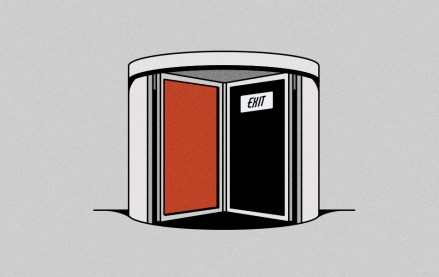The case for and against… agencies making transparency their selling point

Transparency is one of the ad industry’s favorite pet topics.
Today’s marketers spend sleepless nights puzzling over how much of their budget is lost along the mazelike programmatic supply chain, if they can trust CTV middlemen, or whether supposedly epoch-defining AI tools are in fact Mechanical Turks.
The disinfectant of sunlight, in theory, provides a means of resolving those concerns. But as more agencies put proprietary software tools and data platforms (like Havas Media Group’s Converged or WPP Media’s Open Intelligence) at the center of their appeal to new clients, agency execs are toying with the shades.
How much credibility can they gain from proximity to tech kingpins, when most marketing services groups work with the same big firms? How transparent should they be around vendor partnerships, their own commercial deals, and how they develop the tools giving them an edge? How much information is too much for marketers burdened with their own workload?
Let’s talk it out.
The case for transparency
U.S. media agency Horizon is betting that clients want to know how the sausage gets made. It’s staging an open request for information (RFI) process as it considers the tech vendors required to develop the next phase of Blu, the agency’s proprietary data platform software.
Rather than hold its cards close while it plans and develops the platform, it’s gone public with the desire to add new vendors to the tech stack behind Blu.
Partially, that’s in the hope it’ll attract the best tech companies available, according to John Koenigsberg, the agency’s evp and head of product partnerships (he is also, in the spirit of transparency, the son of agency CEO Bill Koenigsberg). “The more open we are, the greater the likelihood that we’re gonna unearth matches or opportunities,” he said.
Koenigsberg said the company currently works with up to 15 vendors on the platform (the figure can vary depending on clients’ own vendor arrangements), including TransUnion and Snowflake. It’s expecting to double that number by the end of the RFI process, and has already heard from 175 companies.
There’s a secondary element, though — the hope that by building in the open, Horizon can attract clients that want a cutting-edge service. It’s not alone in that belief.
“Being open and upfront builds trust and it also gives clients a unique perspective that they can use [on] their own journey,” said Sander Stomph, global svp AI & change management at Monks.
The stance makes sense given the continued, constant presence of procurement teams — which are likely to assess an agency’s capabilities in more black-and-white terms than a CMO might — in agency reviews.
When WPP Media launched its new Open Intelligence platform this week, the company’s executives pointed to the pedigree of the tech and data partners involved in building it, from Google and Snap to Experian.
On Thursday (June 5), it released an announcement highlighting the publisher and ad tech partners involved with the platform, including Disney, PubMatic and The Trade Desk. Like Horizon, WPP Media designed its platform to operate with clients’ existing partners as well as its own.
“We aren’t incentivized to force you to consume a data asset and to buy through a specific platform in a black box, non-transparent, potentially poor quality way,” said InfoSum CEO Lauren Wetzel, one of the executives fronting Open Intelligence, in an interview with Digiday.
The case against transparency
At the end of the day, clients come to agencies for help growing their sales. For many clients, how that growth happens is less important than the fact that it happens at all.
Transparency itself is a subjective term in an industry where there’s little common ground on measurement or meaningful KPIs. And in a global economy wracked with geopolitical uncertainty and when decision-making is being deliberately delayed, CMOs don’t have the time to scrutinize every minute detail. A little packaging or editorial judgement on the part of the agency isn’t unwelcome.
One area that has implications is agency pricing. Looking for a way to account for the time saved by the use of AI tools, Monks previously attempted to shift away from charging for its services based on hourly fees, providing clients with breakdowns of its own AI, data and labor costs (the company didn’t provide a specific cost example).
Based on client feedback, that approach had proven “too complex,” co-founder and chief AI officer Wesley ter Haar said, given the time it takes to calculate. “They’re really just buying the end products, and I don’t think they’re necessarily looking for that level of granularity,” he added.
Stomph also noted that the RFI process used by some clients only allowed for hourly-based pricing models, meaning Monks would have to calculate its price based on the old way to compete for new business.
Monks is now in the midst of reviewing that model and moving toward an output-based means of charging for its work.
Its experience holds lessons for marketers and agencies — that full transparency can lead to information overload.
Horizon’s “north star”, according to Koenigsberg is “how these technologies can help drive growth for our clients.” Given that, perhaps it’s better that agencies remove some of the details that can get under marketers’ feet.
More in Marketing

Pitch deck: How Amazon is recasting Twitch as a core part of its CTV pitch
Amazon is positioning Twitch as a defining asset in its CTV ambitions.

Netflix transforms former mall department stores into experiential venues
The location in Dallas opens this week, and one at the King of Prussia mall near Philadelphia opened last month.

Future of Marketing Briefing: AI has created a new talent paradox in programmatic agencies
The job isn’t execution anymore. AI handles that. The job is judgement.








